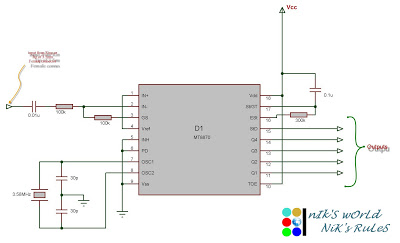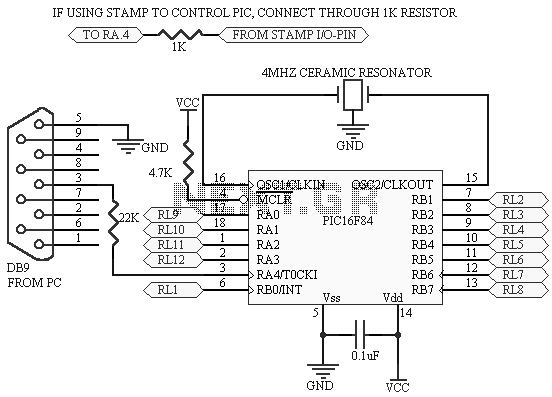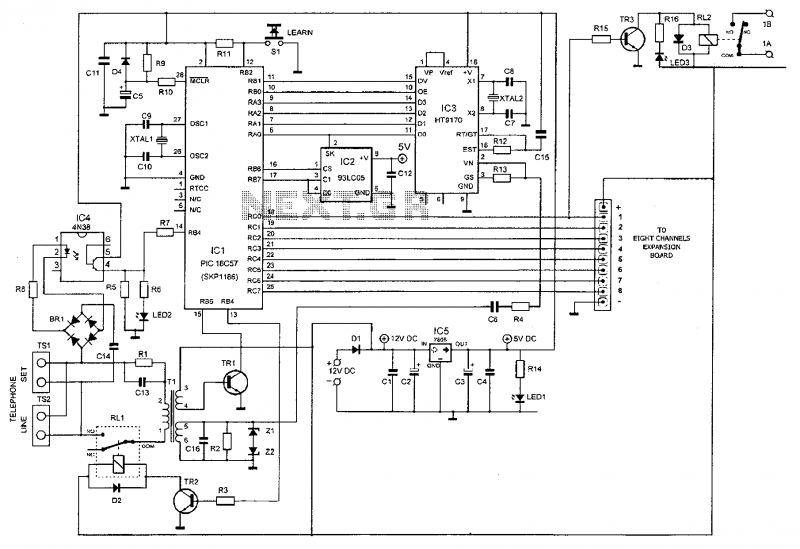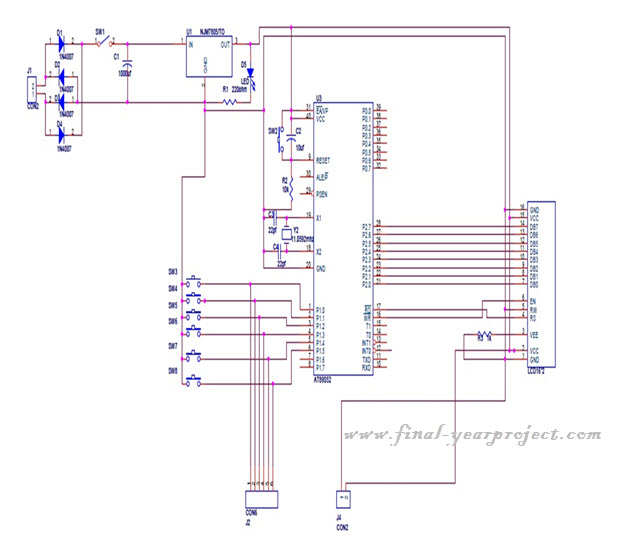
microcontroller 8051 rf tx rx encoder decoder
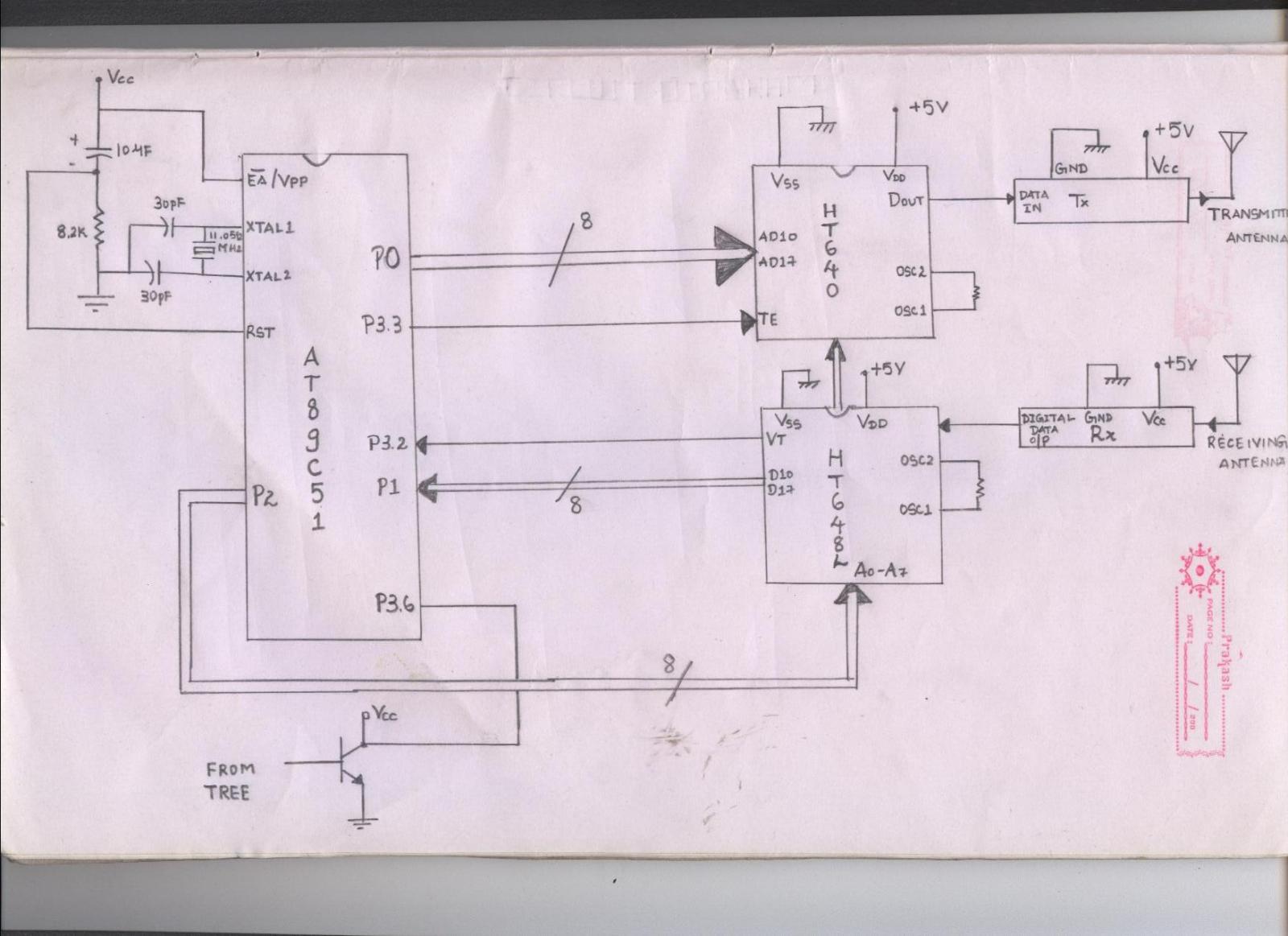
The issue arises when connecting the 8051 microcontroller to the HT640 encoder; the data transmitted is not received by the receiver. However, when the 8051 connections are removed, the transmission functions correctly. This indicates that manual RF communication works seamlessly, as the 8-bit data inputted into the encoder is successfully sent and later received at the decoder side. It is unclear whether some interfacing is required between the encoder (HT640) and the 8051 microcontroller, or at the receiver side between the decoder (HT648L) and the 8051. The 8051 architecture features ports 1, 2, and 3, which are quasi-bi-directional. These ports have weak pull-ups, do not require configuration, and default to inputs with logic high (weak 1s) after reset. They can sink a few milliamps but only source several tens of microamps. Testing has shown that with only the 8051 connected to the encoder and the decoder connected to the receiver, the decoder fails to read the data sent by the 8051 through the encoder. A preliminary examination of the HOLTEK HT640 datasheet indicates that the TE pin on the HT640 is a CMOS input that is pulled low. This presents a problem because the 8051's outputs have weak pull-ups. When the 8051 pin P3.3 is high (logic 1), it creates a voltage divider, leading to an uncertain voltage level on the P3.3/TE net, which depends on the relative strengths of the pull-up and pull-down resistances. When P3.3 is low, the connection should function correctly, yielding a solid low signal.
The described issue highlights the need for careful consideration of interfacing between the 8051 microcontroller and the HT640 encoder, as well as between the HT648L decoder and the 8051. The quasi-bi-directional nature of the 8051's ports means that the voltage levels can be affected by the weak pull-ups present on these ports. To resolve the communication problem, it is advisable to ensure that the TE pin of the HT640 is driven correctly. The weak pull-up from the 8051 may not be sufficient to overcome the pull-down at the TE input, leading to indeterminate logic levels that can disrupt communication.
One potential solution is to implement a buffer or a level-shifting circuit that can provide a stronger drive to the TE pin, ensuring that the voltage levels are compatible and reliable. This could involve using a transistor or a dedicated logic level converter to isolate the 8051 from the encoder, allowing for proper signal integrity. Additionally, verifying the connections and ensuring that there are no short circuits or incorrect wiring is essential. It may also be beneficial to consult the datasheets of all components involved to confirm that the electrical characteristics align with the expected operational parameters. By addressing these interfacing challenges, reliable communication between the 8051 microcontroller and the encoder/decoder system can be achieved.The problem is when i connect the 8051 to the encoder the data send is not received at the receiver but as soon as the 8051 connections are removed the transmisison works perfectly. thus manually the RF communication works perfectly i. e the 8 bit data which i give manually at the encoder is perfectly send and then later received at the decoder sid
e Is some sort of interfacing required b/w encoder-ht640 and microcontroller 8051 or at the receiver side b/w the decoder-ht648l and 8051. help me plz its urgent In the 8051 architecture ports 1, 2, & 3 are quasi-bi-directional ports. They have weak pullups, and no data direction registers. They require no configuration and have 1`s written to them at reset making them inputs or "weak" 1`s They will sink a couple of milliamps, but source only several tens of microamps.
In the 8051 architecture ports 1, 2, & 3 are quasi-bi-directional ports. They have weak pullups, and no data direction registers. They require no configuration and have 1`s written to them at reset making them inputs or "weak" 1`s They will sink a couple of milliamps, but source only several tens of microamps. i checked it separately also i. e only 8051 connected to encoder and TX and only the decoder and RX at the other end but the decoder is not able to read the data send by the 8051 through the encoder.
A cursory review of the HOLTEK HT640 Datasheet reveals the the TE pin on the HT640 is a CMOS input which is pulled low. This is problematic since the 8051 has outputs with a weak pullup. When the 8051 pin P3. 3 is at a `1` this will form a voltage divider and the actual level on the P3. 3/TE net will depend on the relative magnitude of the pullup and the pulldown. When P3. 3 is low all will be fine and you should get a solid low. 🔗 External reference
The described issue highlights the need for careful consideration of interfacing between the 8051 microcontroller and the HT640 encoder, as well as between the HT648L decoder and the 8051. The quasi-bi-directional nature of the 8051's ports means that the voltage levels can be affected by the weak pull-ups present on these ports. To resolve the communication problem, it is advisable to ensure that the TE pin of the HT640 is driven correctly. The weak pull-up from the 8051 may not be sufficient to overcome the pull-down at the TE input, leading to indeterminate logic levels that can disrupt communication.
One potential solution is to implement a buffer or a level-shifting circuit that can provide a stronger drive to the TE pin, ensuring that the voltage levels are compatible and reliable. This could involve using a transistor or a dedicated logic level converter to isolate the 8051 from the encoder, allowing for proper signal integrity. Additionally, verifying the connections and ensuring that there are no short circuits or incorrect wiring is essential. It may also be beneficial to consult the datasheets of all components involved to confirm that the electrical characteristics align with the expected operational parameters. By addressing these interfacing challenges, reliable communication between the 8051 microcontroller and the encoder/decoder system can be achieved.The problem is when i connect the 8051 to the encoder the data send is not received at the receiver but as soon as the 8051 connections are removed the transmisison works perfectly. thus manually the RF communication works perfectly i. e the 8 bit data which i give manually at the encoder is perfectly send and then later received at the decoder sid
e Is some sort of interfacing required b/w encoder-ht640 and microcontroller 8051 or at the receiver side b/w the decoder-ht648l and 8051. help me plz its urgent In the 8051 architecture ports 1, 2, & 3 are quasi-bi-directional ports. They have weak pullups, and no data direction registers. They require no configuration and have 1`s written to them at reset making them inputs or "weak" 1`s They will sink a couple of milliamps, but source only several tens of microamps.
In the 8051 architecture ports 1, 2, & 3 are quasi-bi-directional ports. They have weak pullups, and no data direction registers. They require no configuration and have 1`s written to them at reset making them inputs or "weak" 1`s They will sink a couple of milliamps, but source only several tens of microamps. i checked it separately also i. e only 8051 connected to encoder and TX and only the decoder and RX at the other end but the decoder is not able to read the data send by the 8051 through the encoder.
A cursory review of the HOLTEK HT640 Datasheet reveals the the TE pin on the HT640 is a CMOS input which is pulled low. This is problematic since the 8051 has outputs with a weak pullup. When the 8051 pin P3. 3 is at a `1` this will form a voltage divider and the actual level on the P3. 3/TE net will depend on the relative magnitude of the pullup and the pulldown. When P3. 3 is low all will be fine and you should get a solid low. 🔗 External reference
